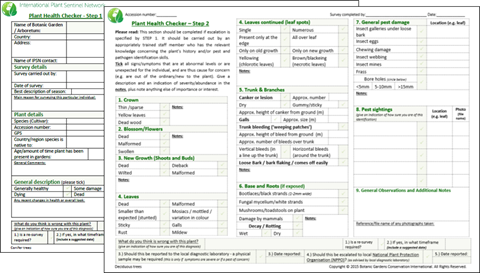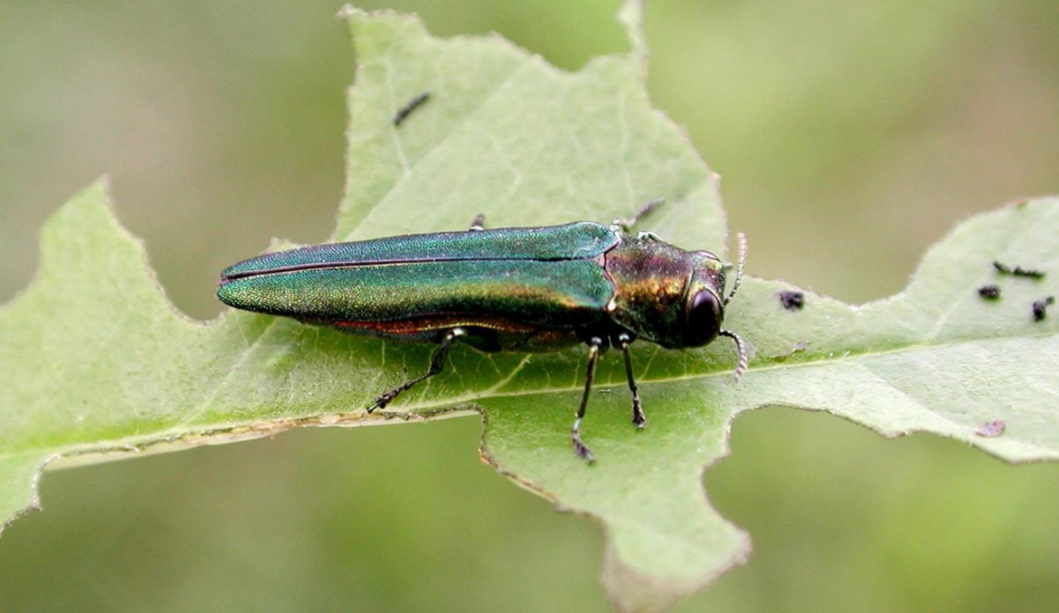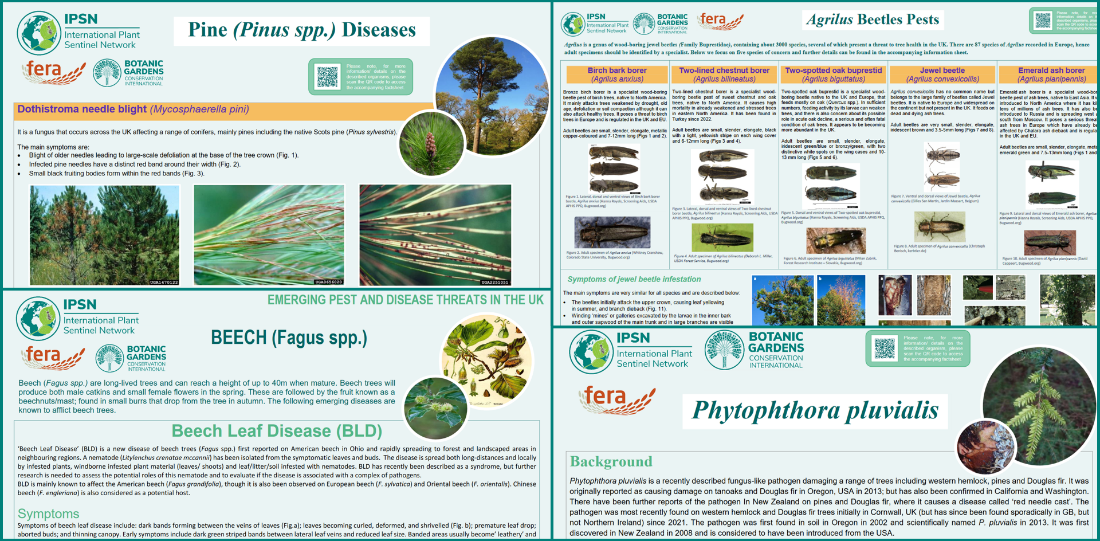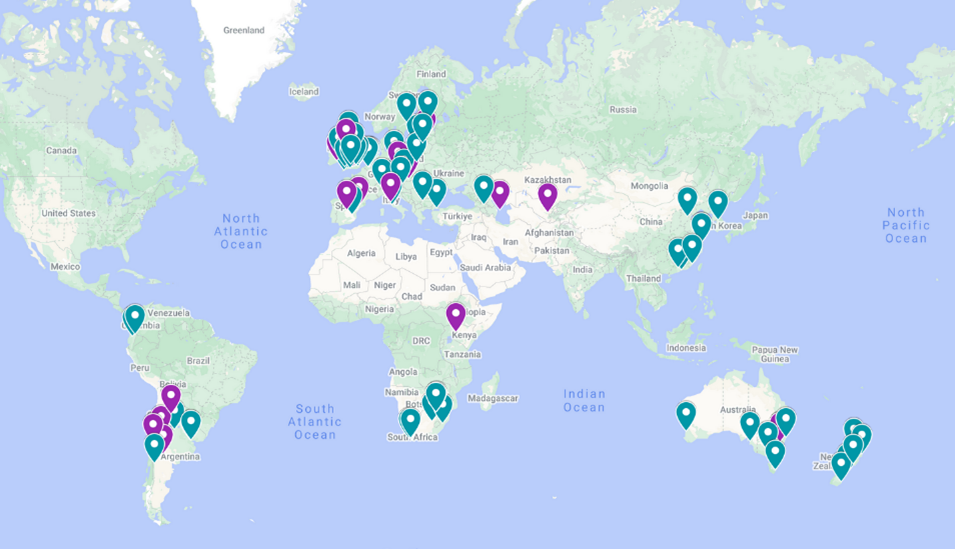The IPSN at 10: Our 10 Greatest Achievements
-
Region
Global -
Programme
International Plant Sentinel Network -
Workstream
Addressing Global Challenges -
Topic
Plant Conservation -
Type
Blog -
Source
BGCI
The International Plant Sentinel Network has served as the world’s only global plant sentinel network for a whole decade! In this time, it has proven its own concept, provided information on a range of pests and diseases, delivered specialist training around the globe, grown to over 90 members and remains unmatched in its surveillance power. This has been a remarkably ambitious project, expanding an innovative early warning concept to an unprecedented scale, but it has been hugely successful. To celebrate our significant birthday, here is a rundown through ten of the IPSN’s greatest achievements to date, starting from the very beginning.
1. The IPSN Gets Going
Back in 2008, a project called PRATIQUE reviewed methods for pest risk analyses, exposing the fact that introduced pests and pathogens are often not recognised until they have already become problematic. There emerged a need for a sentinel network of native plants hosted abroad which could expose those problematic species early. Botanic Gardens Conservation International carried out a survey in 2011 on existing expertise and policy at 146 botanic institutions across 15 countries, which could form the backbone of this ‘International Plant Sentinel Network’ under the formal training and coordination of a management team. A plan was drawn up and arguments made for a world-wide sentinel network, published with the survey results in BGCI’s BGjournal. Come 2013, with Defra funding secured as part of a EUPHRESCO project, Charles Lane (diagnostician at Fera and IPSN founding partner) set about finding partners, developing training materials and designing a universal plant health survey form. Interest for the Network grew and at the 5th Global Botanic Garden Conference in Dunedin, New Zealand, the embryonic International Plant Sentinel Network was officially launched.
“I’m particularly proud of the fact we have moved from a research project to a proof of concept, to becoming a fully functioning network that is now led on behalf of the stakeholders by the BGCI.” – Charles Lane, Fera Science Ltd, Plant Health and Biosecurity Consultant, 2013 – present
2. The Plant Health Checker
One of the IPSN’s greatest early achievements was the Plant Health Checker (PHC), the only universal plant health survey form designed for non-specialists. The PHC breaks plant survey down into a step-by-step assessment of the different parts of the plant. This provides a thorough, standardised RAG (red-amber-green) description of symptoms for broadleaf, conifer and non-woody species to promote monitoring, highlight plant health issues and provide a preliminary diagnosis. These surveys can then reveal to collections managers whether they need to take action and can even be sent to trained diagnosticians for analysis, facilitating sharing of information and feedback between specialists and curators.

3. Surveying Native Host Plants Abroad
Now armed with a universal plant health checker, the IPSN could coordinate the survey of native plant species held in botanic collections abroad. Doing so reveals pests and diseases which could be damaging if introduced to that plant’s native range, providing valuable information on pest-host interactions and an early warning system. Surveys carried out annually on British host species held in Belgium, Australia and New Zealand have been so successful that we began a second sentinel programme surveying American plants in Poland, Chile and now Argentina. The genius of these programmes lies in the familiarity botanic garden staff have with their collections, which allows them to recognise any changes in the plants’ health. While collections’ staff have the skill to carry out these surveys, the IPSN provides coordination, specialist training, the Plant Health Checker survey structure and connections to National Plant Protection Organisations and diagnosticians. These programmes not only contribute to our understanding of pest-host interactions but also help gardens to monitor and manage any issues in their own collections: the benefits are mutual all round, which is why botanic institutions submit their surveys year after year.
4. The Spittlebug Hunt
In 2017, the IPSN took to Twitter for a citizen science experiment aiming to improve records and understanding of spittlebug host plants. Spittlebugs are vectors of Xylella fastidiosa, an infamous plant pathogen not yet reported in the UK but which could threaten a range of plants there, from oak and cherry to rosemary and lavender. The Spittlebug Hunt project asked Twitter users to look for frothy spittlebug nymph nests (called cuckoo spit) in botanic gardens and to tweet their sightings with a photo and location, along with the hashtag #spittlebughunt. An impressive 86 different host plants were reported, expanding the list of known hosts in the region and providing data for pest risk analyses, as well as the UK’s National Risk Register. The Spittlebug Hunt concept was such a successful demonstration of how citizen scientists can contribute to botanic expertise that other organisations have since launched their own!
5. Emerald Ash Borers in Eastern Europe
The emerald ash borer is a voracious east Asian boring beetle responsible for the deaths of tens of millions of ash trees since being introduced to North America, and which is now making its way westwards through eastern Europe. The IPSN is responding by providing special training to support botanic gardens in detecting this threat to their trees and the wider environment; last year’s visual surveys saw 13 gardens in 8 countries survey 488 trees spanning 23 different Fraxinus species. Still not content, the IPSN extended the programme to include scented-lure traps in Estonia, Latvia and Slovakia in 2022, expanding this year to 23 sites in 9 nations all collecting samples and carefully identifying their specimens. The project has now evolved into a collaboration with a specialist EPPO group as part of the continent-wide effort to monitor and prepare for the spread of this little green jewel beetle.

6. Survey Gone Digitial with the ePHC
Long restricted to pen and paper, the Plant Health Checker is seeing a transformation, with a digital version now undergoing rigorous pilot trials. The Electronic Plant Health Checker (ePHC) has been built in ArcGIS’s Survey123 app for use on mobile devices or tablets with internet browsers, putting the survey process in the palms of surveyors’ hands even when they’re out roaming their collections. This makes data entry even easier, allows photos to be taken mid-survey, utilises GPS to pinpoint a plant’s location and allows data upload straight away! This revolution in how we gather and view data is being matched by an online Data Hub, which will allow gardens to amend, expand, explore and download their data, serving as a record of each garden’s plant health observations. For anyone who still prefers the old ways, paper PHC forms will remain available.
7. Spreading Information and Good Practice
The more people know about invasive species, the more widespread that knowledge becomes, the greater the number of people who are armed to tackle the problem. The IPSN has been building a library of emerging pest and pathogen posters and factsheets which anyone can download completely free, expanded every year to cover more and more major threats to plants. We also have guides on tree bleeds and phytophagous insect damage which help garden staff link symptoms to potential causes, and guides to sampling plants for diagnostic analysis, improving the connection between botanic collections and diagnosticians. Then there is the IPSN Guide to Biosecurity, an essential item to support gardens and arboreta in building foundational biosecurity measures and phytosanitary practice. By providing these materials completely free, we improve the quality of observation data received from our members and repay them by building their biosecurity capacity. All of these resources can be found under the resources tab of our web page!
“The growing body of information provided through the IPSN on pests and diseases affecting [botanic] collections demonstrates the power of international networking and knowledge sharing.” – Suzanne Sharrock, BGCI Director of Global Programmes, 2005-2023

8. Small Grants for Funding Biosecurity Research
The IPSN provided its very first set of small grants last year! This exciting development in the role of the Network gives us a new way to expand knowledge of invasive threats, effective biosecurity and the botanic collections which are so central to our function. They also support early-career researchers at British plant health institutions, funding the next generation of entomologists, botanists and phytopathologists. The first round of grants funded three projects: an up-to-date inventory of Australian and New Zealand tree species across UK collections; a survey of biosecurity perceptions and practices across British botanic institutions to reveal challenges to address; and an investigation into the potential invasiveness of plants held in UK collections under a changing climate. This year, to ensure these funds are put to the best use, we asked botanic institutions what they want to see researched. Keep an eye on our newsletter and website for upcoming information about this year’s projects!
9. Connecting Gardens with NPPOs
Most of the world’s nations have designated National Plant Protection Organisations, responsible for officiating safe plant trade, monitoring phytosanitary threats, coordinating response efforts and supporting proper biosecurity within their borders. The IPSN strengthens the connection between these NPPOs and botanic collections, triggering new conversations about how they can support one another. This also opens dialogues between botanic gardens and national diagnostic authorities, supporting curators in knowing which species threaten their accessions, when to report them and how they can be managed; key to the success of the IPSN itself has been the close relationship between BGCI and diagnosticians at Fera, with BGCI’s coordinating role closely supported by Fera’s diagnostic and scientific expertise. Through closer relationships, NPPOs, diagnosticians and botanic collections are more able to share valuable information, utilise resources and work together to promote biosecurity on national scales.
“I believe one of the great achievements of the IPSN has been to ensure that NPPOs are involved in the network and to build these connections at the national level wherever possible.” – Suzanne Sharrock, BGCI Director of Global Programmes, 2005-2023
10. Growing and Growing
The IPSN was created to coordinate the introduction of botanic gardens to the sentinel plant concept and to connect those gardens to develop a global network. This was not a short-term effort – we continue ten years later to establish sentinels and make great efforts to grow the connections between our members. As our network grows, so does our capacity for monitoring; the reach of our training; the impact of our capacity-building; the power we have as a conservation tool; and the strength of the biosecurity community we establish. Thus, each membership holds great importance for the network as a whole to function, expand and improve. Over these first ten years, we have achieved an amazing 93 members across 30 countries, and we’re growing rapidly! A greater reach is empowering us to start new projects and to become an even more powerful Network of professionals, rising to meet the growing threat of invasive species in an ever-connected world. So valuable has our work become that the IPSN is now firmly embedded in Defra’s Great Britain Plant Health Strategy (2023-2028)! Ten years of groundbreaking work has seen the IPSN grow beyond all expectations, and the next decade will no doubt see even greater achievements. Happy 10th anniversary, IPSN!

Support BGCI
You can support our plant conservation efforts by sponsoring membership for small botanic gardens, contributing to the Global Botanic Garden Fund, and more!
Become a Member
Be part of the largest network of botanic gardens and plant conservation experts in the world by joining BGCI today!